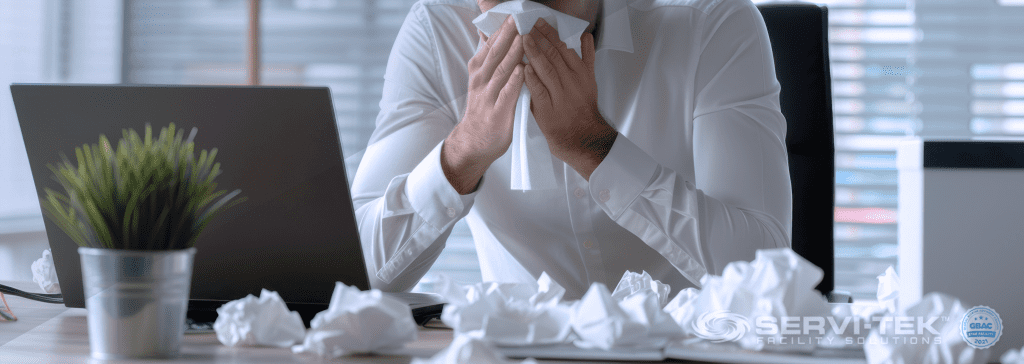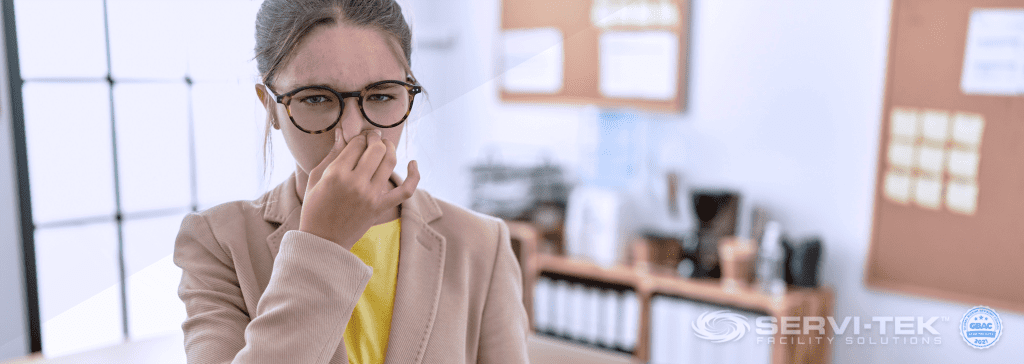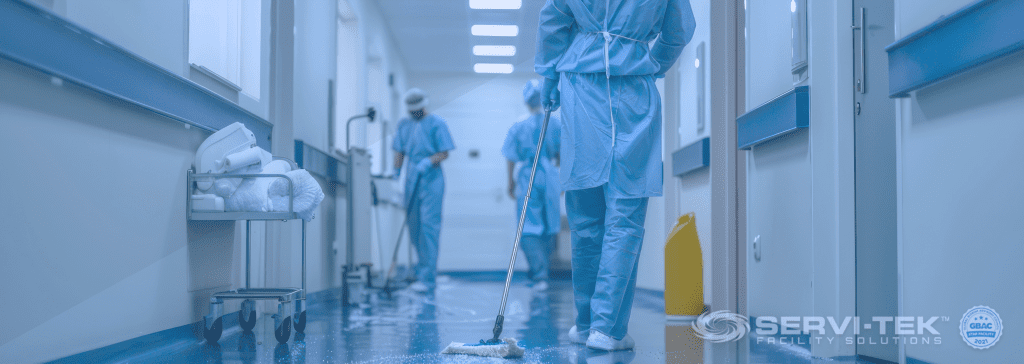Maintaining a clean office is often seen as a minor task or an afterthought. However, the consequences of neglecting proper office hygiene extend far beyond just the visible mess. The financial and reputational risks of poor cleaning practices can have a significant impact on your business. Let’s explore the hidden costs of poor office hygiene and why maintaining a clean, sanitized workspace should be a top priority.
1. Health-Related Expenses

One of the most immediate and costly consequences of poor office hygiene is the increased risk of illness among employees. When surfaces are not cleaned regularly, germs and bacteria thrive, leading to a higher incidence of common illnesses such as colds, flu, and gastrointestinal infections. Employees taking sick days due to unclean environments can significantly impact productivity and increase absenteeism.
Studies have shown that sick employees cost businesses billions annually in lost productivity. The cost of medical treatments and insurance claims can also escalate, adding a financial burden that could have been easily avoided by maintaining a clean office. For large facilities such as commercial properties or multi-floor office spaces, the impact is even more pronounced as germs spread quickly in high-traffic areas like lobbies, elevators, and conference rooms.
2. Decreased Productivity

A cluttered or dirty environment can negatively affect employees’ focus, motivation, and morale. Employees may feel uncomfortable or distracted in an office that isn’t well-maintained, leading to a decline in their performance. A disorganized workspace can also lead to time wasted trying to find documents, tools, or equipment, further reducing productivity.
On the flip side, a clean and well-organized office fosters a positive work culture and encourages employees to perform at their best. For businesses in competitive industries like finance, technology, or real estate, where productivity drives profitability, maintaining cleanliness is a strategic advantage. Additionally, in states or regions prone to seasonal challenges such as flu outbreaks or pollen surges, proactive cleaning routines are essential to safeguard employee health and maintain efficiency.
3. Damage to Equipment and Office Property

Dirt and dust accumulation can damage office equipment, electronics, and furniture over time. Keyboards, computers, and HVAC systems, for instance, can malfunction or suffer from reduced lifespan due to lack of cleaning. Dust buildup can cause overheating in computers, potentially leading to data loss or hardware failure.
Maintaining cleanliness helps preserve the longevity of your office equipment and saves on costly repairs or replacements. For example, in humid climates, mold and mildew can form on neglected surfaces, while in dry, dusty regions, equipment might need additional care to prevent performance issues. A structured cleaning plan tailored to your office’s location and climate is key to avoiding unnecessary expenses.
4. Impact on Company Reputation

First impressions matter, especially when clients, customers, or partners visit your office. An unkempt or dirty workspace can send the wrong message about your company’s professionalism and attention to detail. Clients may perceive your company as unorganized, unprofessional, or careless, potentially leading to a loss of business opportunities.
In industries such as property management, healthcare, and corporate services, where maintaining trust and professionalism is crucial, poor office hygiene can quickly erode confidence. Conversely, a clean and organized office reflects positively on your brand and can strengthen relationships with current clients while helping to attract new ones. Highlighting your commitment to hygiene and cleanliness in marketing materials or presentations can also enhance your reputation.
5. Legal and Regulatory Consequences

In some industries, particularly those in healthcare, food service, or manufacturing, maintaining hygiene standards is a legal requirement. Failing to adhere to cleanliness regulations can result in fines, penalties, or even the shutdown of operations. Even in less regulated industries, neglecting hygiene can expose your company to potential liability, particularly in cases where employees or visitors fall ill due to unsanitary conditions.
Businesses operating in regions with strict environmental or workplace safety standards must pay close attention to cleaning practices. For example, OSHA guidelines in the United States often require employers to maintain safe and sanitary working conditions. Adhering to these standards not only ensures compliance but also demonstrates your company’s commitment to the well-being of its employees and stakeholders.
6. Increased Cleaning Costs

Neglecting regular cleaning leads to a buildup of grime, dust, and stains, making it harder and more expensive to clean when the time comes. What could have been a simple, routine cleaning task can turn into an expensive deep cleaning or restoration job. For instance, carpets that are not vacuumed regularly may require costly shampooing or replacement, and stained furniture may need professional cleaning or reupholstering.
Seasonal factors also play a role. In winter months, salt and mud tracked into offices can damage floors and carpets, while in spring, pollen and allergens may require additional cleaning efforts. By investing in regular, proactive cleaning, you can avoid the need for extensive, costly cleanups and keep your cleaning budget under control.
Targeted Industry Considerations

For property managers and building facility managers overseeing spaces of 30,000 square feet or more, maintaining cleanliness is a complex task with unique challenges. Here are some industry-specific insights:
- Healthcare Facilities: Hygiene is non-negotiable. Poor cleaning practices can lead to the spread of infections, risking patient safety and violating legal regulations. Regular deep cleaning and disinfection are critical.
- Retail Spaces: Customers expect clean and inviting environments. Dusty shelves, dirty floors, or unpleasant odors can deter shoppers and damage your brand reputation. High-traffic areas require consistent upkeep.
- Corporate Offices: Clean workspaces enhance employee satisfaction and productivity. Shared spaces like meeting rooms, cafeterias, and restrooms need frequent attention to maintain a professional image.
- Educational Institutions: Schools and universities face challenges in managing large volumes of people daily. Keeping classrooms, gyms, and libraries clean is essential for health and safety.
- Industrial Facilities: Dust and debris in warehouses or manufacturing plants can pose safety risks and damage equipment. Specialized cleaning protocols are often required to meet industry standards.
How to Prevent Hidden Costs

- Develop a Comprehensive Cleaning Plan: Work with professionals to design a cleaning schedule tailored to your facility’s size, usage, and location.
- Invest in High-Quality Products and Services: Use effective cleaning agents and advanced equipment to tackle dirt, germs, and allergens efficiently.
- Monitor Seasonal Needs: Adjust your cleaning routine to account for weather-related challenges, such as snow in winter or increased pollen in spring.
- Train Employees on Hygiene Practices: Educate your team on maintaining cleanliness and reducing clutter.
- Partner with Experts: Collaborate with trusted cleaning providers, such as Servi-Tek Facility Solutions, to ensure your space remains in top condition year-round.
Conclusion
The hidden costs of poor office hygiene can add up quickly, affecting health, productivity, reputation, and finances. By prioritizing cleanliness and investing in regular maintenance, you can avoid these pitfalls and create a safe, welcoming environment for employees and visitors alike.
Schedule a call with one of our experts today to learn how a tailored cleaning plan can benefit your facility and protect your bottom line.



